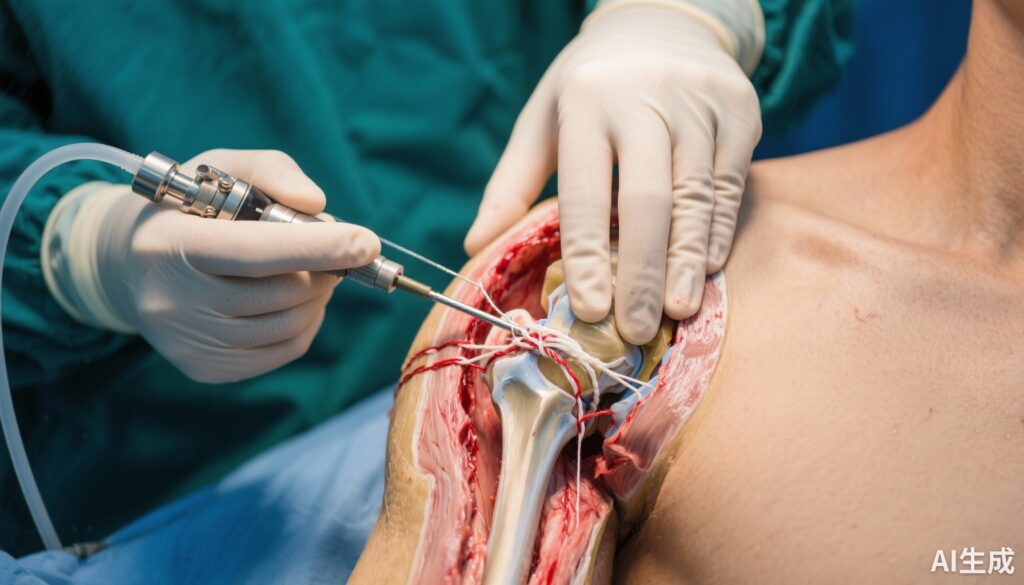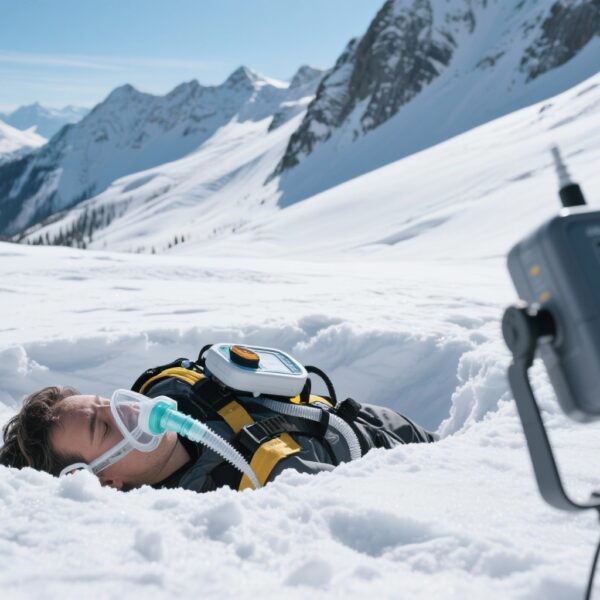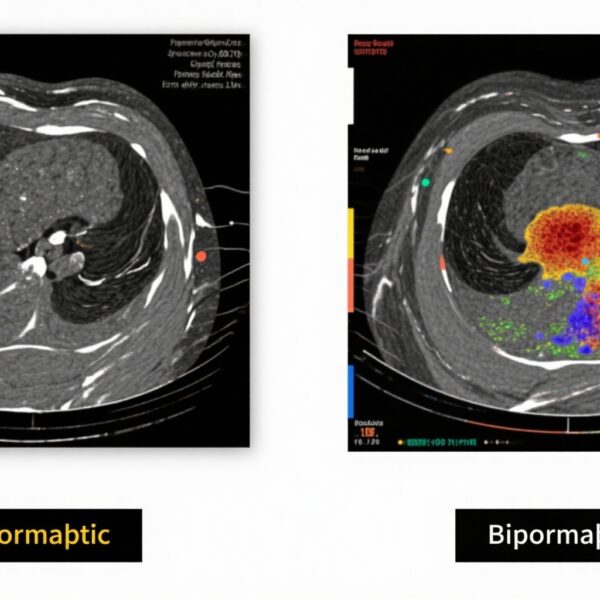Introduction
Traumatic anterior shoulder instability, characterized by recurrent dislocations following injury, substantially impacts patient quality of life and athletic performance. The arthroscopic Bankart repair has emerged as a primary surgical intervention to restore shoulder stability by reattaching the detached anteroinferior labrum and capsule to the glenoid rim. However, historical literature has reported recurrence rates following arthroscopic Bankart repair reaching as high as 37%, raising concerns regarding long-term durability. Importantly, these poorer outcomes often derive from studies using earlier surgical techniques and cases involving patients with critical bone defects, which complicate the repair process.
Against this backdrop, Do and colleagues (2025) conducted an extensive long-term follow-up of arthroscopic Bankart repair using a contemporary technique with stringent inclusion criteria to elucidate recurrence rates and outcome predictors over a decade after surgery.
Study Design and Methods
This investigation was a retrospective case series (Level of Evidence 4) involving 181 patients (182 shoulders) who underwent arthroscopic Bankart repair for traumatic anterior instability between 2005 and 2014. Strict exclusion criteria were applied to enhance homogeneity: prior shoulder surgeries, additional stabilization procedures, use of fewer than three suture anchors, multidirectional instability, and any critical bony defects (glanoid bone loss >20% or off-track Hill-Sachs lesions) which would mandate bony reconstruction rather than isolated soft tissue repair.
The surgical technique mandated a minimum of three suture anchors to ensure robust labral fixation. The primary endpoint was recurrent instability/events postoperatively. Secondary outcomes incorporated multiple validated scoring systems assessing subjective and objective shoulder function: Subjective Shoulder Value (SSV), visual analog scale (VAS) for pain, Constant score, Western Ontario Shoulder Instability Index (WOSI), Rowe score, plus evaluation of sports activity levels including return to preinjury sports participation.
Risk factors for recurrence, including age at surgery, number of preoperative dislocations, and timing of surgery after initial dislocation, were analyzed statistically to identify correlations with outcomes.
Key Findings and Clinical Outcomes
At a mean follow-up of 13.8 years, the overall recurrence rate stood at 20.9%, considerably lower than historic rates but still representing a notable proportion of treatment failures over the long term. Patient age emerged as a significant predictor; those aged 20 years or younger at surgery had a statistically higher risk of recurrent instability (P = .007).
While operation after the first dislocation trended towards a lower failure rate (13.8%) compared with surgery following multiple dislocations (24.2%), this difference did not reach statistical significance (P = .108). However, this trend aligns with the concept that earlier surgical intervention may improve outcomes.
Importantly, patients without recurrent instability demonstrated superior results across all clinical measures: higher SSV, lower pain scores, and improved Constant, WOSI, and Rowe scores, underscoring the functional benefits of successful Bankart repair.
Notably, a shorter interval between the initial dislocation and surgery correlated with better functional scores despite unchanged recurrence rates, suggesting that early surgical stabilization may limit progressive soft tissue and capsulolabral damage, detrimental to shoulder function.
Return to sports was encouraging, with 97.6% resuming some level of activity and nearly 70% returning to at least 90% of their previous sports performance, reflecting substantial functional recovery.
Expert Commentary and Clinical Implications
This comprehensive long-term series is one of the few to assess outcomes after arthroscopic Bankart repair using a modern technique and strict patient selection excluding substantial bony pathology. The 20.9% recurrence aligns with other contemporary reports and highlights that while advances have improved results over older techniques, recurrent instability remains a significant concern.
The identified risk factors—young age and multiple preoperative dislocations—are consistent with previous biomechanical and clinical data suggesting that immature tissue, higher activity levels, or greater capsulolabral damage predispose to failure.
The beneficial impact of early surgery on functional outcomes despite stable recurrence rates supports clinical guidelines favoring early arthroscopic stabilization in appropriate patients to prevent joint degeneration and facilitate rehabilitation.
Nevertheless, the recurrence rates underscore that Bankart repair alone may be insufficient for patients with nonmodifiable risk factors such as large bone defects or off-track lesions, where adjunctive procedures like remplissage or bony reconstructions may enhance stability.
Limitations of the study include its retrospective design and Level 4 evidence rating, which may introduce selection bias and limit causal interpretation. However, the long follow-up duration and extensive clinical assessments strengthen its relevance.
Conclusion
This study demonstrates that contemporary arthroscopic Bankart repair offers durable clinical benefit in traumatic anterior shoulder instability with a 10-year recurrence rate of approximately 21%. Younger patients and those with multiple dislocations before surgery are at higher risk of failure. Early surgical intervention after the first dislocation may improve functional outcomes. These findings reinforce the importance of careful patient selection and timing of surgery and suggest that adjunctive procedures should be considered for high-risk patients to optimize long-term shoulder stability and function.
Future prospective studies and randomized trials could further delineate the optimal surgical indications and techniques to reduce recurrence and improve patient-centered outcomes in this challenging population.
Reference
Do A, Scheibel M, Moroder P, Hayta A, Akgun Demir I, Paksoy A, Akgün D. Long-term Outcomes of a Contemporary Arthroscopic Bankart Repair Technique in Patients With Traumatic Anterior Shoulder Instability: A Minimum 10-Year Follow-up. Am J Sports Med. 2025 Aug;53(10):2298-2305. doi: 10.1177/03635465251351293



